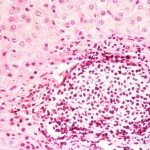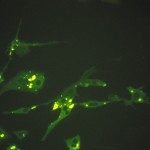Link to Pubmed [PMID] – 16878455
Dev Biol (Basel) 2006;125:3-13
Rabies encephalitis still generates 50,000 human deaths/year. It is due to neuron infection by lyssaviruses. Seven genotypes (GT) are currently distinguished within the Lyssavirus genus which segregate in two phylogroups (PG). This classification is constantly evolving due to isolation of new lyssaviruses within bat populations. Functional differences exist between GTs in term of neurotropism, pathogenesis, induction of apoptosis, immunogenicity, and their molecular basis are starting to be elucidated. Lyssavirus vectors are mammals, preferentially from the Carnivora and Chiroptera orders. Phylogenetic reconstruction strongly supports that lyssaviruses evolved in chiropters long before the emergence of carnivoran rabies which very likely occurred through host-switchings from bats to carnivores. If dog rabies control is possible by vaccination and population control, if oral vaccination demonstrated its potential to eliminate rabies from a terrestrial wildlife reservoir (fox in Western Europe), it is unrealistic today to clear lyssaviruses from bats, while bat rabies is a growing concern for both public and animal health. As bat transmit divergent lyssavirus GTs which are not well prevented by available vaccine strains, there is a need to increase the protection spectrum of vaccines. DNA-based immunization with plasmids expressing chimeric G proteins (fusion of two halves from different GTs) was shown to be effective in inducing a complete immune response and to broaden the spectrum of rabies vaccines toward lyssavirus vaccines. Further, the lyssavirus G protein can carry foreign epitopes/antigens in the perspective of multivalent vaccines against various zoonoses of carnivores.

